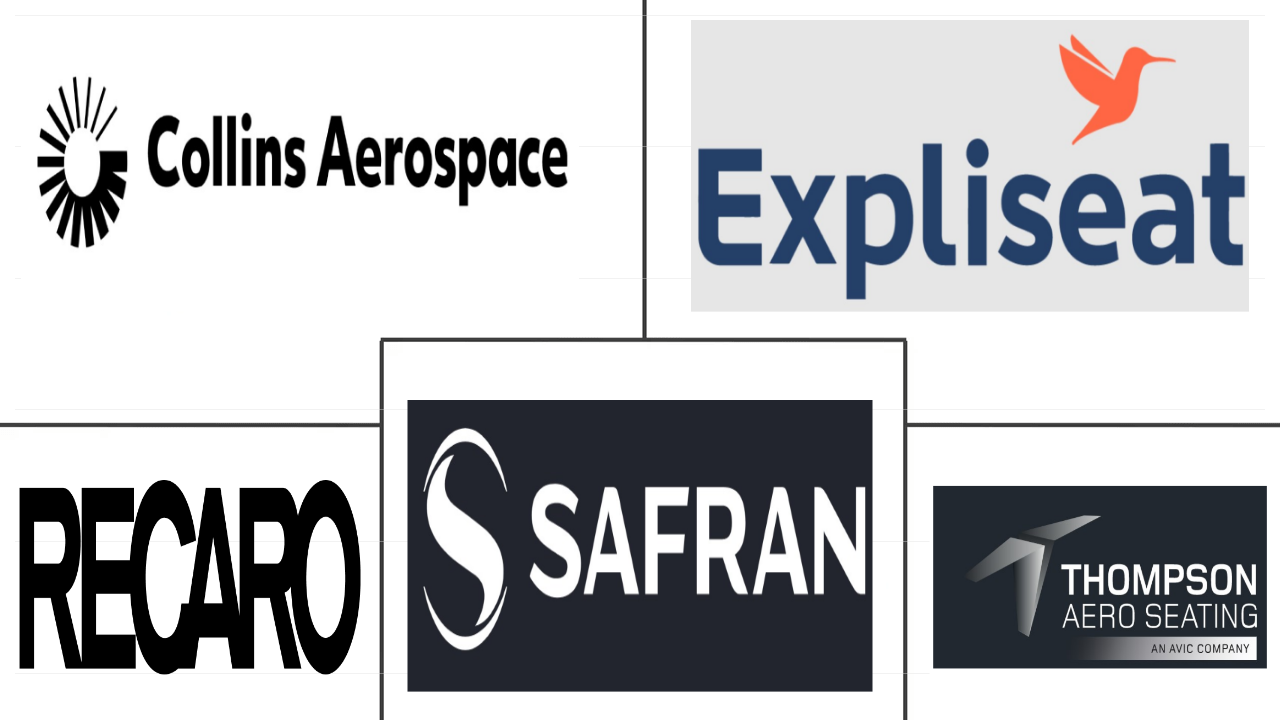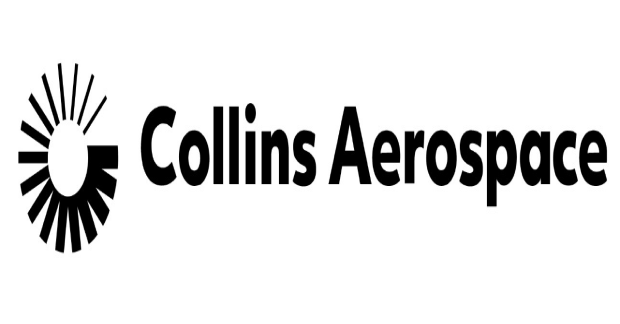Market Size of north america commercial aircraft cabin seating Industry
| Icons | Lable | Value |
|---|---|---|
|
|
Study Period | 2017 - 2030 |
|
|
Market Size (2024) | USD 0.81 Billion |
|
|
Market Size (2030) | USD 1.05 Billion |
|
|
Largest Share by Aircraft Type | Narrowbody |
|
|
CAGR (2024 - 2030) | 4.38 % |
|
|
Largest Share by Country | United States |
|
|
Market Concentration | High |
Major Players |
||

|
||
|
*Disclaimer: Major Players sorted in no particular order |
North America Commercial Aircraft Cabin Seating Market Analysis
The North America Commercial Aircraft Cabin Seating Market size is estimated at 0.81 billion USD in 2024, and is expected to reach 1.05 billion USD by 2030, growing at a CAGR of 4.38% during the forecast period (2024-2030).
0.81 Billion
Market Size in 2024 (USD)
1.05 Billion
Market Size in 2030 (USD)
0.37 %
CAGR (2017-2023)
4.38 %
CAGR (2024-2030)
Largest Market by Aircraft Type
80.22 %
value share, Narrowbody, 2023
A fleet of narrowbody aircraft adds flexibility in terms of fleet management and helps reduce airlines' operating costs, thereby resulting in its rapid adoption. The demand for premium economy seats in low-cost carriers has increased.
Fastest-Growing Market by Aircraft Type
4.67 %
Projected CAGR, Narrowbody, 2024-2030
The convenience of air travel and its low cost due to increased competition among domestic airlines may boost the demand for narrowbody aircraft.
Largest Market by Cabin Class
78.21 %
value share, Business and First Class, 2023
The increasing number of business-class seats has aided the growth of the business and first-class category in the region.
Largest Market by Country
93.10 %
value share, United States, 2023
The growth of the passenger aviation sector and the US-based airlines' fleet expansion plans boosted the growth of the US aircraft cabin seating market.
Leading Market Player
29.37 %
market share, Collins Aerospace, 2022

Collins Aerospace dominates the North American aircraft cabin seating market with its extensive range of product offerings in the cabin interior category, including seats, lighting, galleys, and other products.
The focus of airlines on passengers' comfort and privacy is expected to drive the demand for narrowbody aircraft in North America
- The latest generation of aircraft seats are made from lightweight, non-metallic materials and designs to reduce fuel expenses and increase the aircraft's sustainability. The demand for seats with enhanced technological features and convenience is increasing, thereby accelerating market growth. Airline operators and OEMs worldwide are increasing their efforts to reduce aircraft weight and develop a sustainable way to manage the airline industry in consideration of the zero-emission 2050 goal.
- As domestic aviation demand has increased, the market for narrowbody aircraft is anticipated to rebound faster than that of widebody aircraft. The 737 MAX's return to service in late 2020 supported the expansion of the narrowbody market. Additionally, an enhanced seating structure with more space than economy-class seats is becoming highly essential due to the rising preferences of business-class travelers.
- In terms of deliveries during 2017-2022, a total of 2,049 aircraft were procured by various airlines in the region. Out of these 2,049 aircraft, narrowbody aircraft accounted for 92%, and widebody aircraft accounted for 8%. The rise in the delivery of new commercial passenger aircraft has positively driven the growth of the cabin seating market. For instance, in July 2021, United Airlines announced that it placed a 270-plane order for Boeing 737 Max and Airbus A320s, and Delta Airlines placed orders for 100 Boeing 737-10 aircraft, with an option for 30 more. Such orders are expected to generate demand for North America's aircraft cabin seating market, and during 2023-2030, a total of 2,885 aircraft are expected to be delivered.
Fleet development by airlines, an increase in demand for fuel-efficient aircraft, and passengers seeking personalized travel experiences are the factors driving the market
- The commercial aircraft segment is expected to experience significant growth during the forecast period, primarily driven by the demand for narrowbody aircraft due to the growing number of domestic passengers in North America. Fleet development of aircraft, an increase in demand for fuel-efficient aircraft, growth in the number of airline passengers, and the consideration of the zero-emission 2050 goal of airlines are factors fueling the demand for commercial aircraft. As of August 2023, the region had a backlog of 1,474 Boeing aircraft and 986 Airbus aircraft. Of these, the US alone had 2,405 aircraft in backlog; hence, the country is expected to witness more significant growth.
- The demand for aircraft seats is driven by passengers as they seek personalized travel experiences. Airlines are responding by investing in customizable seating options that cater to various passenger preferences, such as extra legroom and lie-flat beds. American Airlines had plans to introduce new long-haul routes in 2023; the airline is expected to start accepting deliveries of its next batch of 25 V787-9s and 50 A321XLRs. The new aircraft is expected to feature fully flat business-class seats with direct aisle access, along with proper premium economy seats. In June 2021, American Airlines finished the “Project Oasis” retrofit of its B737-800 fleet. It also completed a similar retrofit of its A321 fleet by the end of 2021. Similarly, Alaska Airlines (Alaska) has placed orders with Recaro Aircraft Seating to equip its new Boeing 737 MAX aircraft with the CL4710 and BL3530 seats. Canada’s Nolinor Aviation is equipping its Boeing 737-400 fleet with the TiSeat E2 from Expliseat. With such developments, the market is expected to grow by 1.08% from 2023 to 2030.
North America Commercial Aircraft Cabin Seating Industry Segmentation
Narrowbody, Widebody are covered as segments by Aircraft Type. Canada, United States are covered as segments by Country.
- The latest generation of aircraft seats are made from lightweight, non-metallic materials and designs to reduce fuel expenses and increase the aircraft's sustainability. The demand for seats with enhanced technological features and convenience is increasing, thereby accelerating market growth. Airline operators and OEMs worldwide are increasing their efforts to reduce aircraft weight and develop a sustainable way to manage the airline industry in consideration of the zero-emission 2050 goal.
- As domestic aviation demand has increased, the market for narrowbody aircraft is anticipated to rebound faster than that of widebody aircraft. The 737 MAX's return to service in late 2020 supported the expansion of the narrowbody market. Additionally, an enhanced seating structure with more space than economy-class seats is becoming highly essential due to the rising preferences of business-class travelers.
- In terms of deliveries during 2017-2022, a total of 2,049 aircraft were procured by various airlines in the region. Out of these 2,049 aircraft, narrowbody aircraft accounted for 92%, and widebody aircraft accounted for 8%. The rise in the delivery of new commercial passenger aircraft has positively driven the growth of the cabin seating market. For instance, in July 2021, United Airlines announced that it placed a 270-plane order for Boeing 737 Max and Airbus A320s, and Delta Airlines placed orders for 100 Boeing 737-10 aircraft, with an option for 30 more. Such orders are expected to generate demand for North America's aircraft cabin seating market, and during 2023-2030, a total of 2,885 aircraft are expected to be delivered.
| Aircraft Type | |
| Narrowbody | |
| Widebody |
| Country | |
| Canada | |
| United States | |
| Rest of North America |
North America Commercial Aircraft Cabin Seating Market Size Summary
The North America Commercial Aircraft Cabin Seating Market is poised for growth, driven by the increasing demand for lightweight and technologically advanced seating solutions. As airlines and original equipment manufacturers (OEMs) focus on reducing aircraft weight and enhancing sustainability, the market is experiencing a shift towards seats made from non-metallic materials. This trend is further supported by the rising preference for more spacious and comfortable seating options, particularly among business-class travelers. The resurgence of domestic aviation demand, especially in the narrowbody aircraft segment, is expected to accelerate market expansion. The return of the 737 MAX to service has bolstered the narrowbody market, which is anticipated to recover more swiftly than the widebody segment. The growing number of aircraft deliveries, predominantly narrowbody, underscores the positive trajectory of the cabin seating market in the region.
The commercial aircraft segment is set to witness significant growth, fueled by the increasing number of domestic passengers and the demand for fuel-efficient aircraft. The market is characterized by a backlog of aircraft orders, with the United States leading in demand due to its substantial air passenger traffic. Airlines are investing in customizable seating options to meet diverse passenger preferences, enhancing the travel experience. The expansion of low-cost carriers and the introduction of long-range narrowbody aircraft are key factors driving the market. Major airlines in North America, including American Airlines, Delta Air Lines, and United Airlines, are actively procuring new aircraft to maintain a younger fleet and cater to the rising demand for air travel. The market is fairly consolidated, with leading companies like Collins Aerospace, Expliseat, Recaro Group, Safran, and Thompson Aero Seating playing pivotal roles in shaping the industry's future.
North America Commercial Aircraft Cabin Seating Market Size - Table of Contents
-
1. MARKET SEGMENTATION (includes market size in Value in USD, Forecasts up to 2030 and analysis of growth prospects)
-
1.1 Aircraft Type
-
1.1.1 Narrowbody
-
1.1.2 Widebody
-
-
1.2 Country
-
1.2.1 Canada
-
1.2.2 United States
-
1.2.3 Rest of North America
-
-
North America Commercial Aircraft Cabin Seating Market Size FAQs
How big is the North America Commercial Aircraft Cabin Seating Market?
The North America Commercial Aircraft Cabin Seating Market size is expected to reach USD 811.19 million in 2024 and grow at a CAGR of 4.38% to reach USD 1.05 billion by 2030.
What is the current North America Commercial Aircraft Cabin Seating Market size?
In 2024, the North America Commercial Aircraft Cabin Seating Market size is expected to reach USD 811.19 million.

